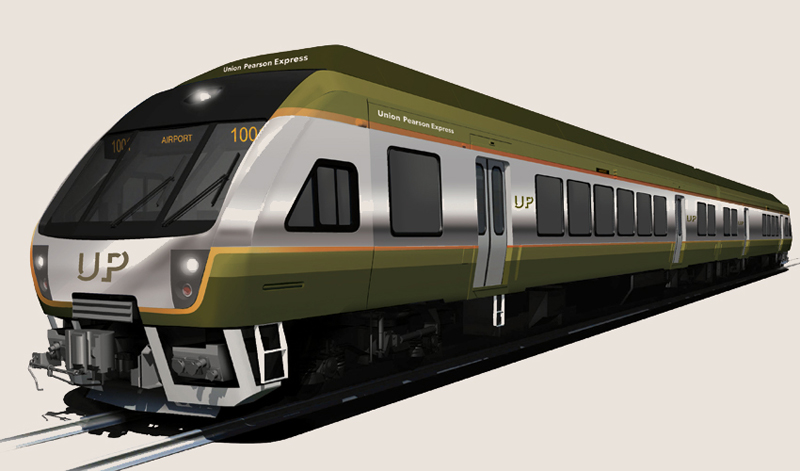
Many cities have rail links to their airports, including Vancouver, New York, London, Amsterdam, and Paris. Although many of these are cities historically built on rail lines, municipalities built during the postwar era are now adding trains to add sustainable transportation options to their transit systems. Toronto will join in next spring with the Union-Pearson Express (UPX), set to open for service in time for the Pan Am Games in July 2015. This long-awaited service will take only 25 minutes and offer travellers luggage racks, luggage tags, and wi-fi. It will make only two stops (Weston and Bloor West GO Stations), reaching top speeds of 79 km/h. It’s particularly needed in Toronto, where traffic in Mississauga has increased to unmanageable proportions in the past few years. Current options include express buses run by the TTC, but for many in the region a bus stop or route is too far awa to make the trip viable by transit.
However, since September Metrolinx officials have been fending off accusations that the cost of the UPX service will prevent many from using it–at least on a regular basis. Metrolinx chair Bruce McQuaig played the elitism card, saying that the train is “meant to be an extension of the airport experience, rather than a daily commuter service.” (As if people most people using Lester B. Pearson International Airport (YYZ) don’t fly economy and take the cheapest alternative to the airport). The real goal is to help Metrolinx recover operating costs–estimated at $79 million annually.
The UPX fares were finally announced this week. Riders will pay $27.50 for a one-way trip, dropping to $19 for Presto card users. Airport workers can also purchase a $300 monthly pass which would work out to $7.50 per ride if they used it for 40 rides per month. Presto, at the moment, really only makes sense for those who cross the region on a regular basis: 1.3 million riders per month use it to access ten transit systems in the region, including Durham Region Transit, Mississauga’s MiWay, and the Hamilton Street Railway. Presto will be fully implemented by 2016–currently only a handful of TTC subway stations and the 510 Spadina streetcar have Presto card scanners.
Luckily, the UPX won’t be the only option to get to YYZ. The 192 Airport Rocket bus, which currently runs from Kipling Station to the airport, has a daily ridership of 4,500, is equipped with luggage racks and makes only three stops on its 20-minute trip to/from Terminal 1. The bus runs every 10 minutes for most of the day and costs the same as a regular bus, subway, or streetcar. The TTC is interested in doubling its ridership in 2015, and will spend $100,000 on efforts to raise its visibility. So the Rocket remains an option for those who can’t afford the money train.
